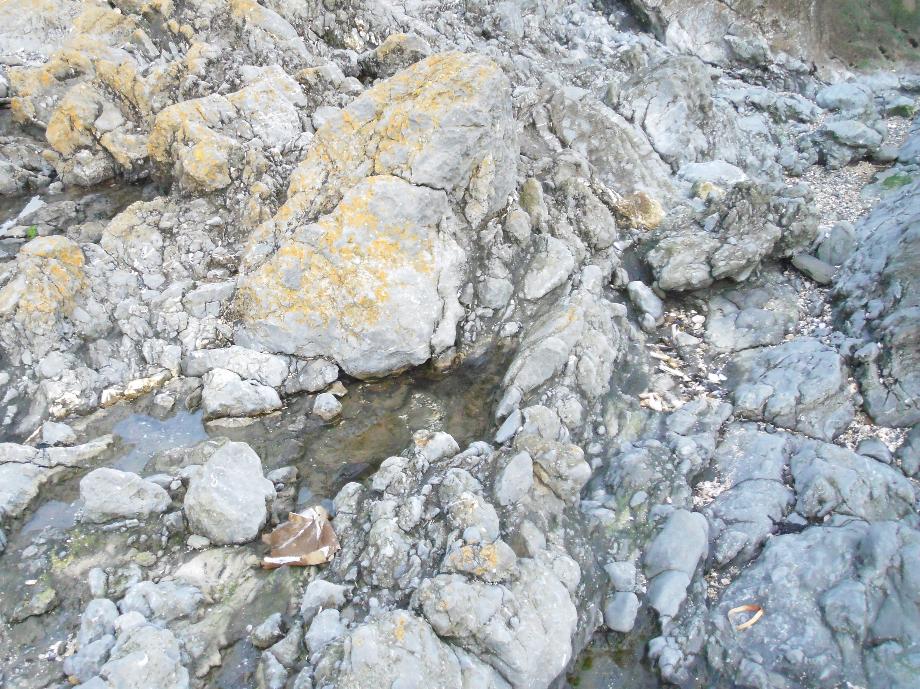- Home
- About Us
- Contact Us
- News
- Planning Matters
- Environment Matters
- About Portmarnock
- Gallery
- Useful Links
- News Archive
- Portmarnock Tidy Towns
- Monthly News Updates
- Support Portmarnock Local Business
- FORUM
- Geology Walk Portmarnock
- Geology across the Rocks
- PCA Blog
- Portmarnock Sustainable Energy Community
G1.mp3
The rocks along this shoreline were formed on the floor of a warm tropical sea some 340 million years ago when Ireland was situated just North of the equator ( it has been drifting steadily North ever since) http://geoschol.com/periods.html These rocks have been dated by the fossils they contain ( crinoids and conodonts) and belong to the early part of the Carboniferous Period.
At that time the Wicklow mountains formed a landmass to the south, and there was also a landmass just north of Skerries, such that Malahide and Portmarnock were in a small marine trough running roughly east-west. broadening out into a large shelf in both directions.
The beds below formed by bits of rock slumping down from the shelf above, and getting stuck in the lime mud flooring of the trough. Some of the darker more muddy beds are rich in fossils, crinoid debris, as little white circles,
A 6m long lens shaped block surrounded by relatively fragmented limestone ( breccia), which is conspicuous due to orangy-brown weathering and more intense veining than the surrounding rocks. This whole block has slid down from above, which is why it looks different from it’s surroundings, and doesn’t form part of a continuous bed.
Interbedded with the pebbly beds are darker more shaly beds in which a planar fabric running through the rocks is seen ( rock cleavage). This developed after the rocks formation, by parallel alignment of platy minerals when the rocks were intensely squeezed during the period of mountain building which was responsible for amongst others the Hartz mountains in Germany and the Vosges mountains in France. Variscan Orogeny. https://www.geolsoc.org.uk/Plate-Tectonics/Chap4-Plate-Tectonics-of-the-UK/Variscan-Orogeny It was also at this time that the beds of rock that were originally laid down horizontally on the seafloor, were tilted up to the 45° angle at which they now lie.

The 3m to 4m high cliffs of glacial till deposited on the Carboniferous shales and mudstones during the last Ice age( in Pleistocene times between 2 million and 11 million years ago).Close examination will reveal, amongst others: clasts of red sandstone, green volcanics, black mudstone, dark chert and white vein quartz. The jumbled and angular nature of the included fragments is typical of sediments deposited by ice.